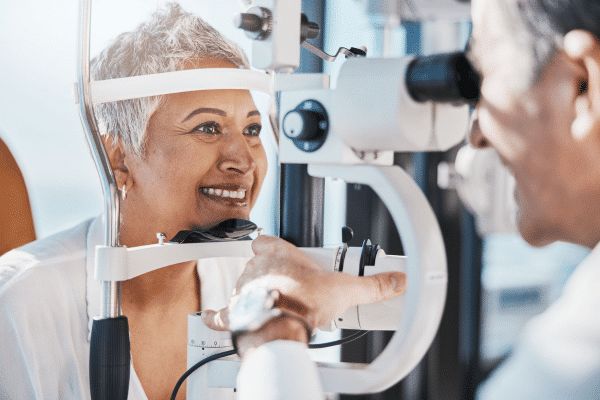PresbyMAX®, or bi-aspheric multifocal corneal ablation, is an innovative presbyopia correction method designed for people “over 40.” PresbyMAX® allows the cornea to be reshaped in such a way as to allow good near and far vision without the need for glasses.
The procedure involves multi-curvature patterning of the corneal surface with the AMARIS® 1050RS excimer laser, where the laser’s operating algorithm is a mapping of refractive algorithms. The resulting new curvature of the cornea allows the patient to see clearly from different distances.
What does the PresbyMAX® treatment consist of?
PresbyMAX® is a procedure in which the visual defect on both eyes is corrected to zero. The idea behind this procedure is not to compare one eye with the other. The dominant eye is more designed to look away, and the non-dominant eye to look closer – nevertheless, the patient should look and perceive the world with both eyes, resulting in the desired outcome.
The addition to nearsightedness is some asphericity left on the cornea, allowing patients to see sharply, for example, a cell phone, a menu at a restaurant, reading a newspaper or book, etc.
As an added bonus, the pupils dilate in lower light conditions, and the peripheral parts of the cornea allow even better perception of the distance.
The PresbyMax® procedure is performed on both eyes on the same day, and improvements in near vision occur just a few to several hours after the procedure.
PresbyMax® – contraindications to the procedure
Not every patient suffering from presbyopia is eligible for laser presbyopia correction. Contraindications to the procedure include. Glaucoma, cataracts, metabolic, endocrine and immunological diseases, pacemakers, corneal lesions (e.g., corneal cone, corneal scarring, inflammation and dystrophy), dry eye syndrome and inflammatory eye lesions. At Voigt Eye Clinic in Krakow, the decision to perform the procedure is always made by the doctor on the basis of an ophthalmological examination and an interview with the patient.

